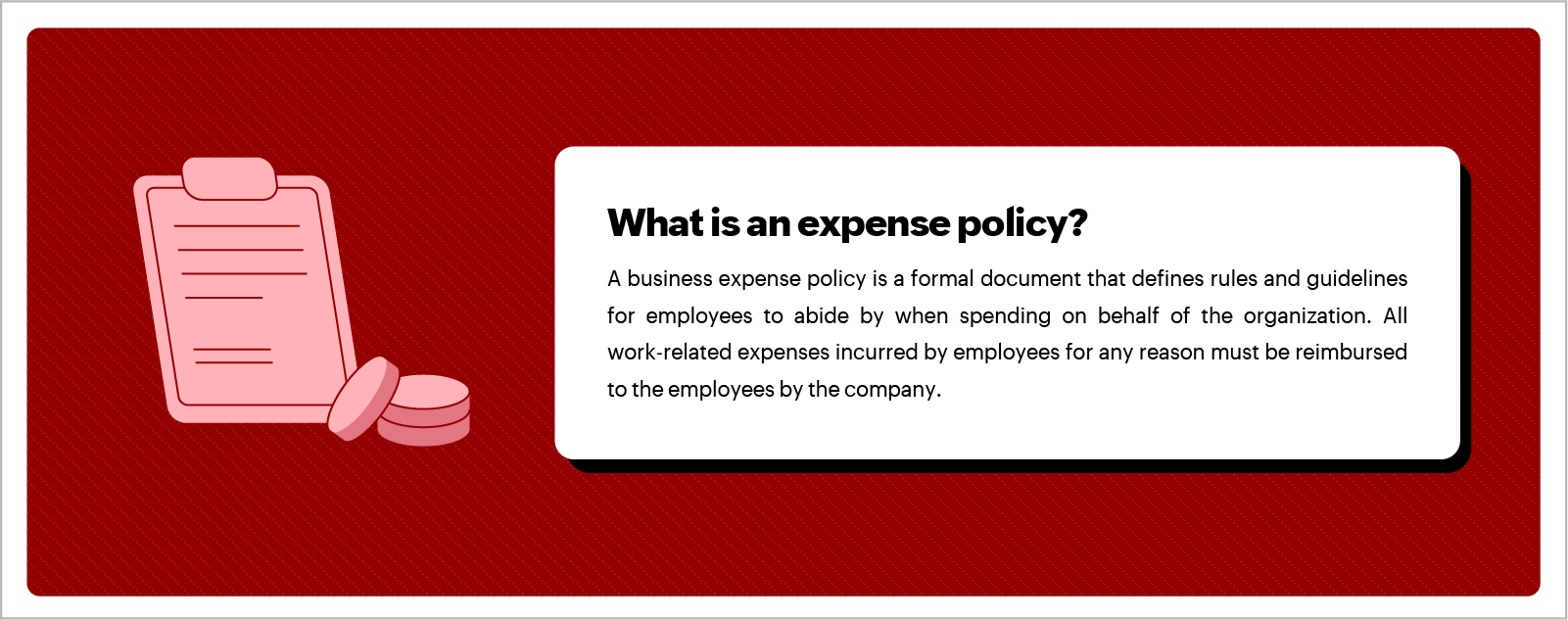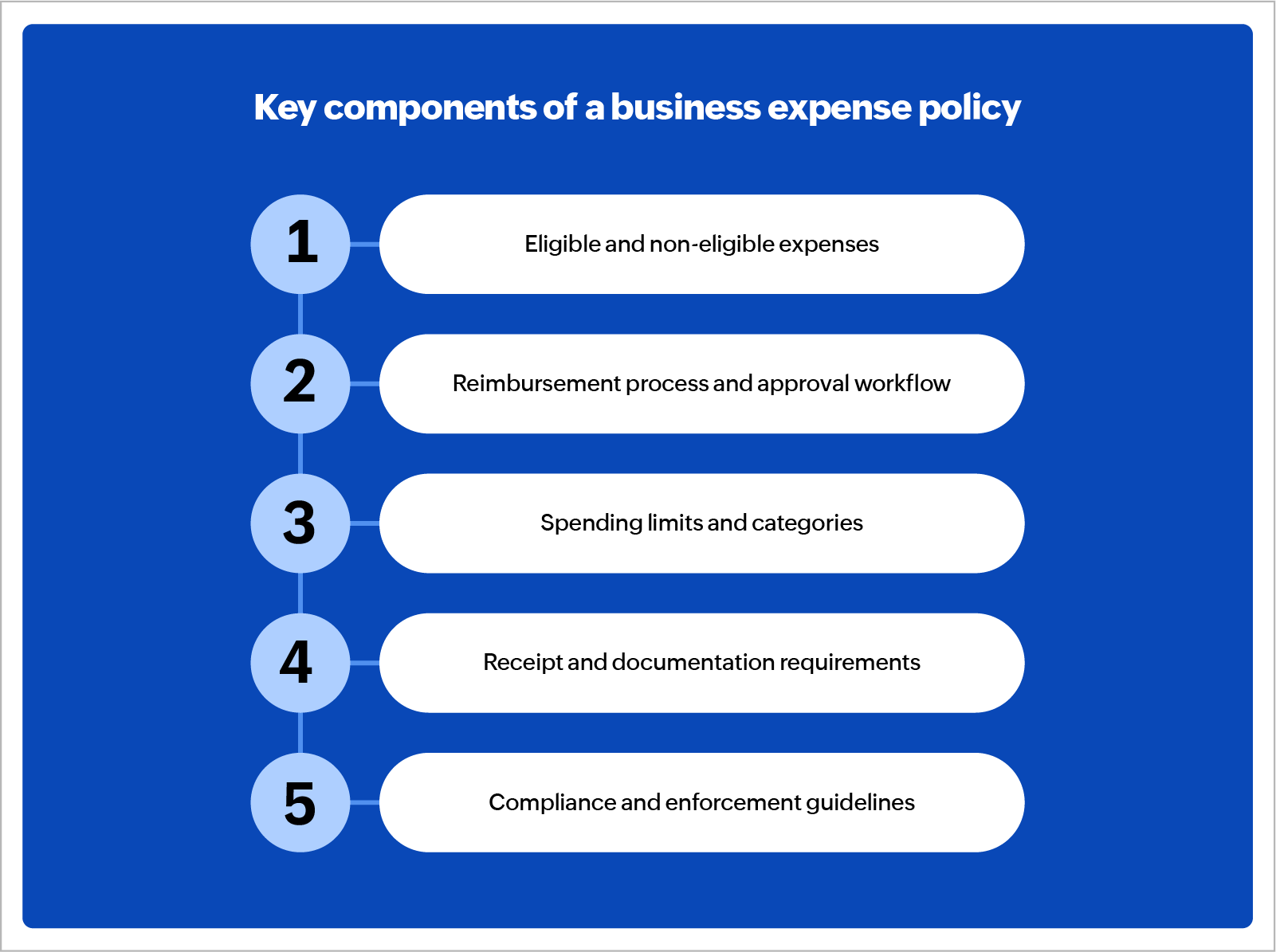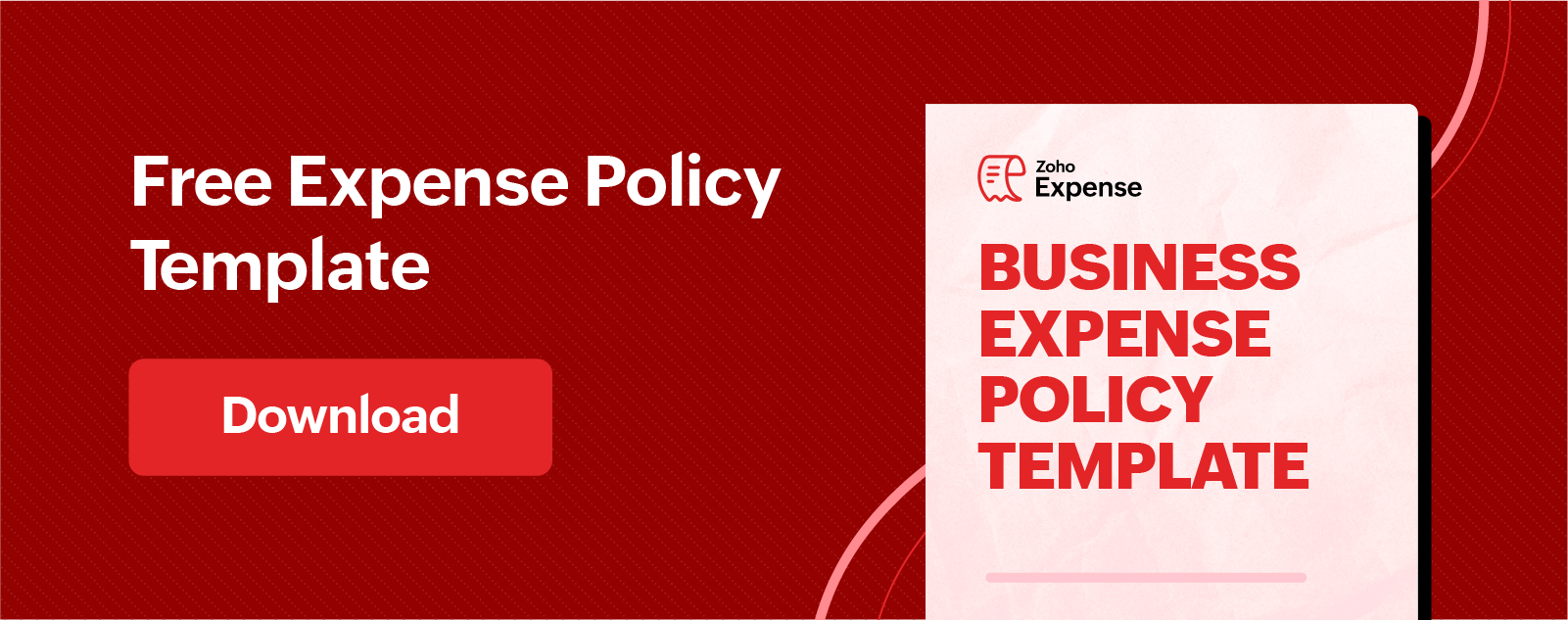- HOME
- Expense Management
- How to create a business expense policy [Free downloadable template]
How to create a business expense policy [Free downloadable template]
Introduction
Expense policies are guidelines and rules that businesses set up to help streamline expenses incurred by employees on behalf of the business. Businesses are required to reimburse these expenses and keep detailed records of the same for accurate accounting and audits.
Companies often find it difficult when employees make frugal decisions, maintain budgets, and choose the right options when spending without a business expense policy. However, building an expense policy is a cumbersome (but rewarding) process. The free downloadable expense policy template, along with this guide, can help you start building the right policy for your organization.

What is an expense policy?
A business expense policy is a formal document that defines rules and guidelines for employees to abide by when spending on behalf of the organization. All work-related expenses incurred by employees for any reason must be reimbursed to the employees by the company.
A company expense policy ensures transparency across the organization, allowing employees the flexibility to make spending decisions without impacting budgets and processes. An expense policy also guides employees in following the right processes to improve reimbursement times and ensure compliance.

Why does your business need an expense policy?
Prevents fraud and overspending
With limits and rules defining the amount that employees can spend, a business expense policy proves highly effective in curbing over-spending and fraudulent behavior. As employees submit their expenses, every penny spent by the employee is checked against every rule that applies to the spend category, making sure that the expense is legitimate, within budgets, and necessary for business operations. Expense policies act as a guidebook for administrators to keep these activities in check.
Ensures speedy approvals and reimbursements
Depending on the company structure, an expense policy illustrates the hierarchy that expense approvals need to follow. This makes it easier for employees to identify their approvers and submitters simply by referring to the policy, ensuring consistent and speedy approvals and reimbursements.
Saves time for finance teams
As employees refer to the policy to get their doubts and questions addressed and follow the rules specified, finance teams save a bunch of time spent in back and forth communications resolving issues, directing employees, and following up on missed details like receipts. Written policies help finance teams reduce their "support" role burden and allow them to focus more time on things that matter, such as financial planning and budgeting.
Facilitates regulatory compliance and analysis
Lastly, a well-defined business expense policy is simply the best way to communicate and ensure every employee that submits an expense report attaches all the required details. From merchant details, amounts, and line-item details, to information such as trips, customers, projects, and more, the information captured with every report allows finance admins to analyze spending patterns. Collecting documents such as receipts, tickets, warranties, and the like also helps companies comply with regulatory compliances and business requirements.
Key components of an effective expense policy
Every business expense policy should include the following 5 essential sections:
- Eligible and non-eligible expenses
- Reimbursement process and approval workflow
- Spending limits and categories
- Receipt and documentation requirements
- Compliance and enforcement guidelines

Step-by-step guide on how to create an expense policy for your business
Step 1: Assess company needs and objectives
Evaluate the types of expenses your employees typically incur and align them with your company's financial goals. This assessment helps tailor the policy to meet specific operational needs and ensure it supports the overall business strategy, including meeting budgetary compliance, improved employee experience, and more.
Step 2: Coordinate with key stakeholders
Involve leaders from various departments, such as Finance, HR, and Operations, to gather diverse perspectives. This collaboration ensures the policy is well-rounded and addresses the needs of different teams within the organization.
Step 3: Define expense categories
Clearly communicate expense categories that comprehensively group all types of expenses that employees may incur. Read up on the expense categories that can help maximize tax deductions and also ease the accounting and audit processes.
Step 4: Set spending limits
Establish specific spending limits for each expense category based on the company's budget and industry standards. These limits help control costs and prevent unnecessary expenditures.
Step 5: List receipt and document requirements
Specify the types of documentation required for expense claims, such as receipts or invoices. Clearly outline the submission procedures to ensure employees help maintain regulatory compliance as well as ease their approval process for quicker reimbursements.
Step 6: Outline reimbursement procedures
Explain in detail how and when employees should submit expenses, how long approvals take, and when they can expect reimbursement. The reimbursement process workflow can better be communicated using a flowchart with use cases for better understanding.
Step 7: Address exceptions
Include guidelines for handling out-of-policy expenses, one-time expenses, or emergencies. Establishing clear guidelines for handling exceptions helps maintain fairness and consistency.
Step 8: Communicate the policy
Ensure the policy is communicated effectively to all employees, and is stored and available for employees to refer to whenever needed.
Step 9: Update the policy
The policy must regularly be reviewed to reflect changes in company needs or industry standards. Appoint a committee with all stakeholder representation that meets every six months or one year to review and revise the policy. This helps maintain a relevant and effective expense policy.
Free download: Expense policy template
The free customizable expense policy template can be used by any business aiming to build their expense policy from scratch. The template covers a comprehensive set of sections that cover everything required by employees to process expenses incurred or reimbursement requests raised by them. It is designed to nudge business administrators and finance professionals to define company goals based on which policy rules can be built.
The downloadable guide is in an editable format for administrators to customize for use. Simply download the file and look for placeholders for company details, expense limits, categories, per diem rates, and more. All placeholder content will be highlighted in yellow in the document for easy identification and updating.
Common mistakes to avoid when creating an expense policy
Vague descriptions: Avoid descriptions like "Be frugal when incurring expenses" or "Practice mindfulness while spending" when communicating best practices or guidelines. Such words allow subjectivity and communicate less with more words.
Incomplete approval process: Apart from the straightforward approval process involving employees submitting their requests to their managers or heads, include exceptional approval workflows, such as in the event of approver unavailability, to ensure clarity in the process across all use cases.
Lack of communication: Ensure the policy document is communicated to every employee and is available to employees whenever they wish to refer it. Save it in a common folder or place where employees have quick access.
Failure to update the policy regularly: Every spend limit set by the company may not transcend time, as prices frequently fluctuate affecting the spending prowess that the limited amount set for the expense category. This requires frequent analysis and updates. A prime example would be the GSA per diem rates that are set by the US government, which undergo changes every year after a thorough review. This allows for inflation and fluctuations to be accommodated when employees travel and spend on behalf of the business.
Conclusion
Every business where employees spend a substantial amount on behalf of the company must create a formal expense policy document for their staff to refer to and follow. This eases the processing effort for employees and admins alike. Here are a few takeaways and best practices from the guide.
It is necessary for organizations where employees incur expenses on behalf of the company to create an expense policy. An expense policy helps prevent fraud and overspending, ensures speedy approvals, saves time for finance teams, and facilitates regulatory compliance and analysis.
Ensure your expense policy includes eligible and non-eligible expenses, the complete reimbursement process, approval workflows, spending limits, allowed and disallowed categories, documentation requirements, and compliance guidelines.
Download the customizable template to start building your policy. Build sections and add guidelines specific to your company within the template, with the help of the step-by-step guide, for a comprehensive policy document.
Ready to bring your expense policy to life? Learn how Zoho Expense can help streamline your business expense policy while simplifying compliance.
- Dhwani
Dhwani Parekh is a seasoned FinTech content writer with more than 7 years of experience in SaaS marketing. As a contributing expert at Academy by Zoho Expense, she focuses on uncovering trends that empower businesses to streamline their financial operations, especially business travel and expense management. With deep industry knowledge and a pulse on the rapidly evolving landscape of business spend, Dhwani’s content adds tremendous value to Academy by Zoho Expense.
